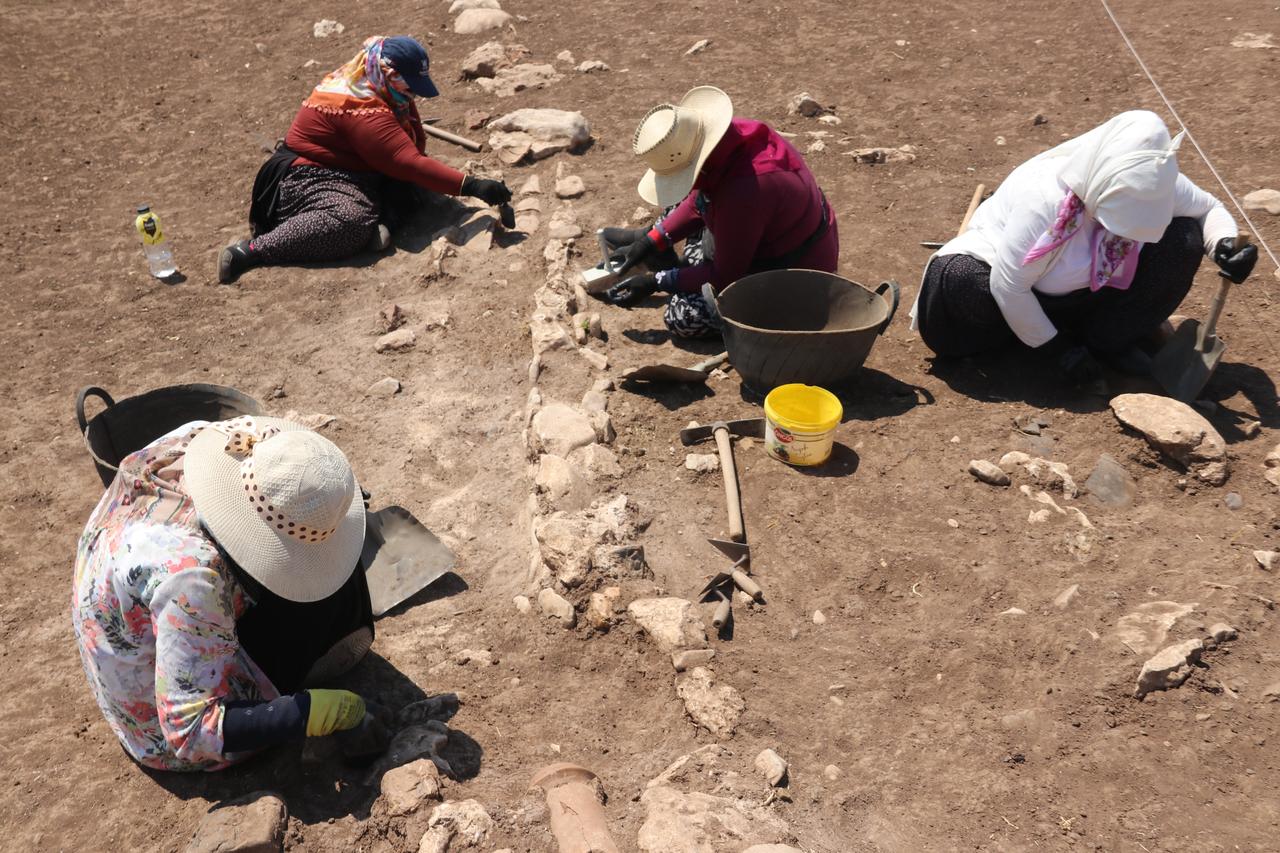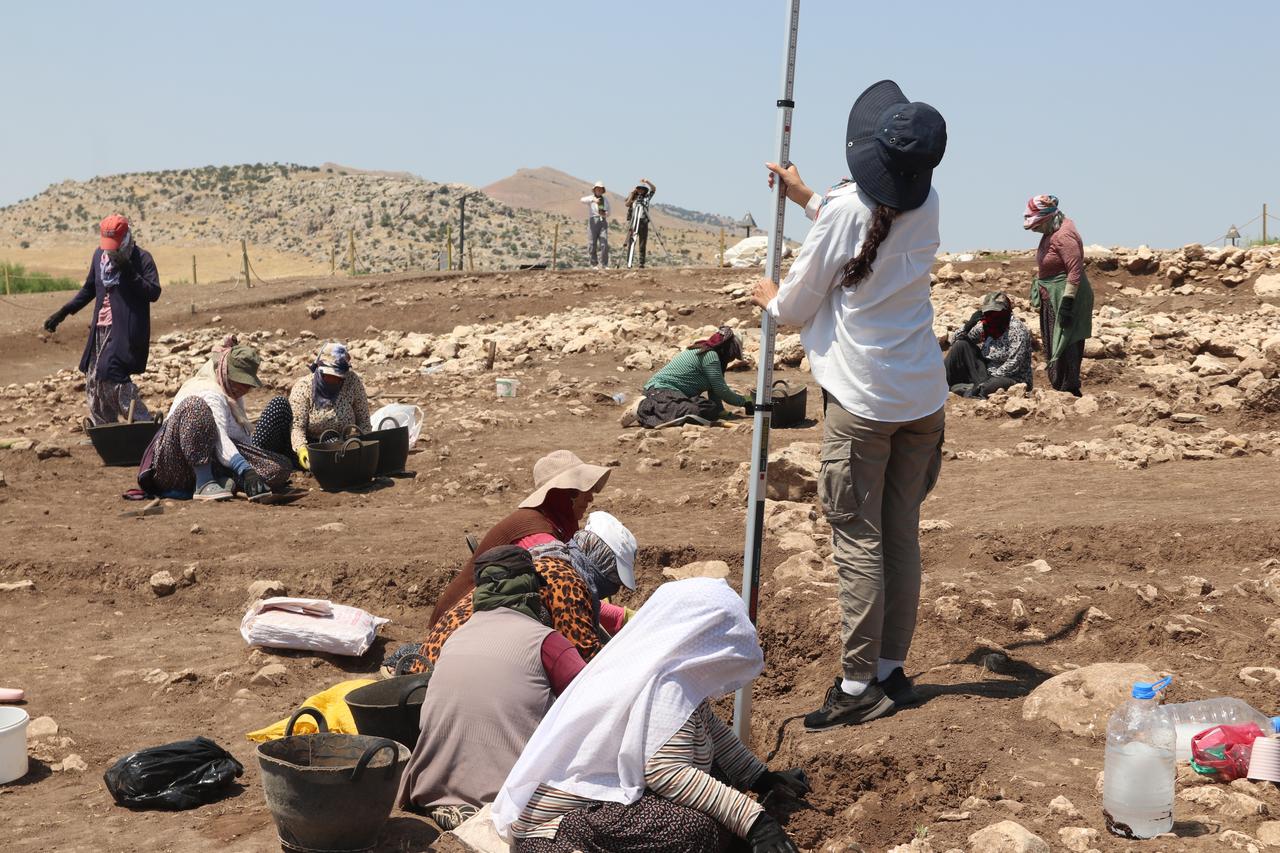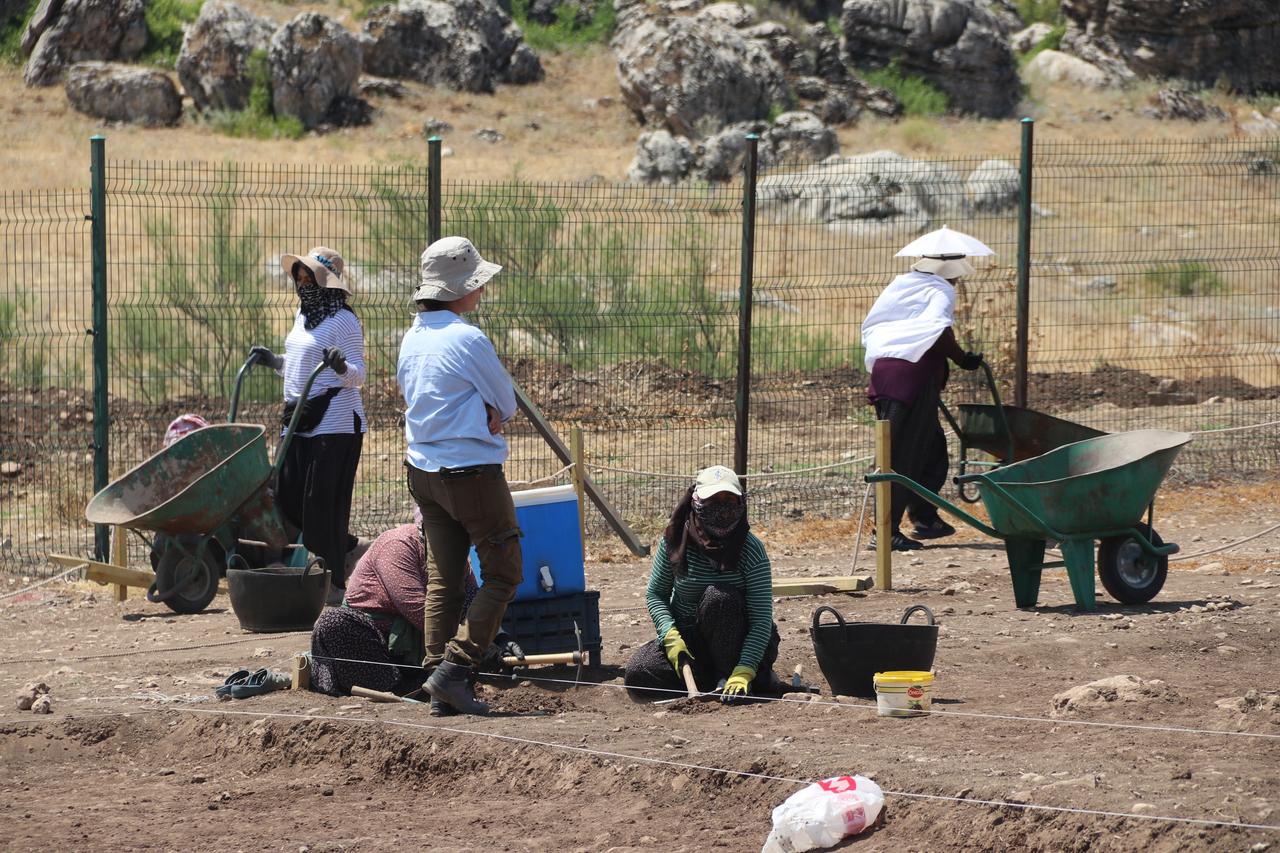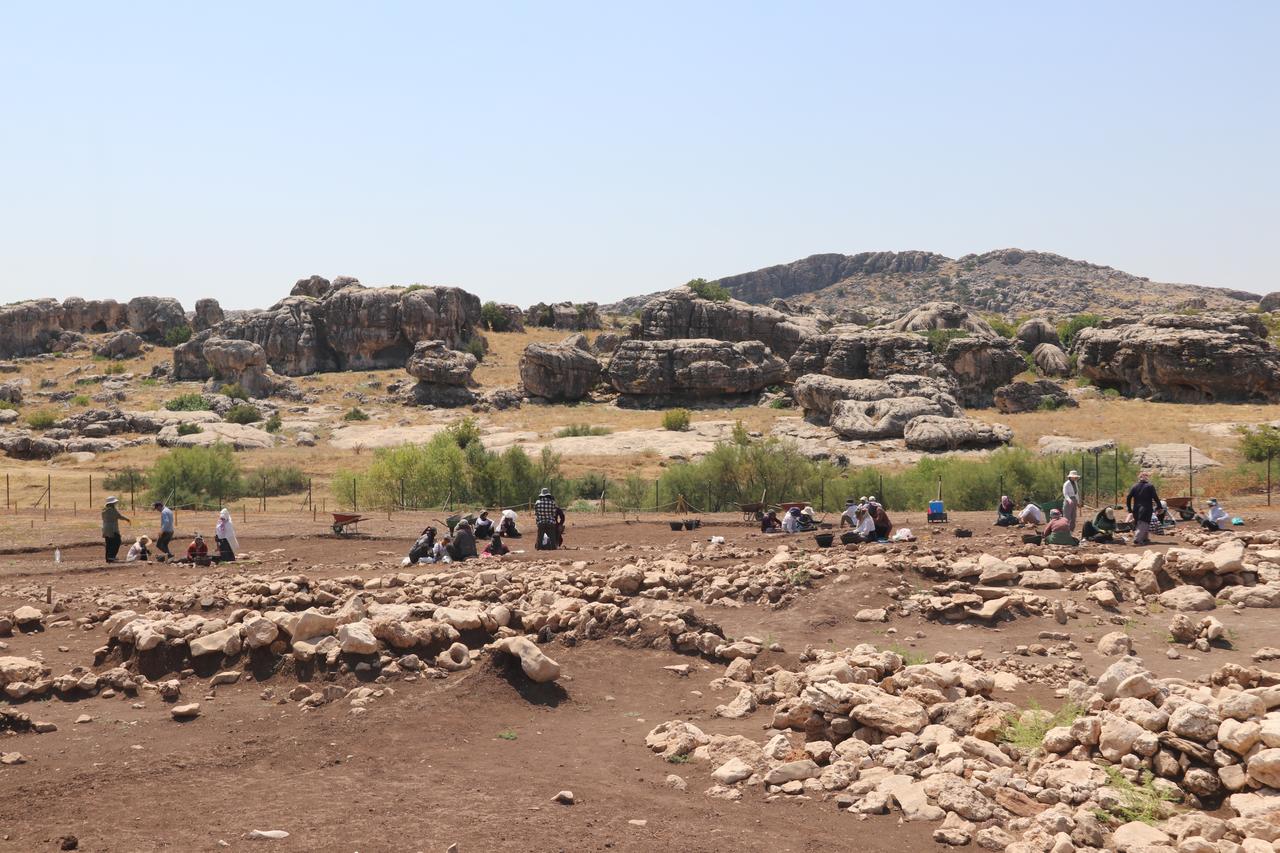
Ongoing excavations at the eastern section of the 12,000-year-old Neolithic settlement of Cayonu Mound in Diyarbakir’s Ergani district have revealed four grid-planned structures and a Bronze Age water channel, providing new insights into early urban organization and water management in prehistoric Anatolia.

Discovered during surface surveys in 1963 and first excavated in 1964 by renowned archaeologists Halet Cambel and Robert J. Braidwood, Cayonu Mound sits just north of Hilar village in the Ergani Plain. The site, previously known as Kotabercem (Cayboyu), is among the earliest places in the world where communities transitioned from nomadic to settled life and began farming.
Archaeological research has confirmed continuous human occupation at Cayonu from as early as the 10th millennium B.C., placing it among the most important prehistoric sites in the Near East.

Current excavations led by Associate Professor Savas Sarialtun from Canakkale Onsekiz Mart University have focused on an unexplored eastern area of the mound. According to Sarialtun, the team identified new Neolithic layers and noted that cultural deposits in this zone were particularly rich, prompting more intensive digging.
The 2025 season has seen excavation areas expand to 750 square meters, with a goal of doubling that by the end of the year. The research team, comprising 60 members including archaeologists, students, and local workers, has unearthed a range of significant finds.
Among these are four grid-planned buildings—an architectural layout typical of early Neolithic Cayonu—and an obsidian tool locally referred to as the “Cayonu tool.” Obsidian is a type of volcanic glass formed when lava cools rapidly without crystallizing.

One of the season’s most intriguing discoveries is a constructed water channel, made by aligning ceramic pipes (locally called "kunks") and reinforcing them with masonry. While analyses are still underway, archaeologists are trying to determine whether the system carried clean or waste water.
Sarialtun remarked that “the presence of such a water channel suggests an advanced social structure capable of coordinating large-scale infrastructure. This was likely built for a special complex rather than ordinary homes.”
Excavators have also retrieved malachite—a bright green copper carbonate mineral—and 14 copper artifacts, indicating that metalworking was common in the settlement. Dozens of ornamental beads were found, including round, almond-shaped, and multi-holed varieties. The total is expected to reach the hundreds by the season’s end.
These finds, along with copper and malachite raw materials, point to a well-developed culture of craftsmanship and possibly trade. The structures themselves may have served both residential and production purposes.
Cayonu is not limited to the Neolithic era. Researchers have documented evidence from the Pottery Neolithic and Early Bronze Age as well. Last season’s discovery of a large wall initially thought to serve a protective function has now been interpreted as a boundary structure, clarifying spatial organization within the settlement.
“Despite being mid-season, we already have twice as many finds as last year,” Sarialtun noted, attributing the success to expanded excavation areas and an efficient field strategy.

The newly uncovered grid-plan buildings in the eastern zone mirror earlier finds in the western section, suggesting that this architectural style was widespread. According to Sarialtun, these structures, dating to around 9,100–9,000 B.C., are crucial for understanding the social and spatial organization of early farming communities in Anatolia.
Tools, ornaments, and household items provide further clues about the community’s daily life, production methods, and social hierarchy.
“Cayonu still holds many secrets,” Sarialtun said. “Every excavation season brings new revelations about one of the most pivotal settlements in human history.”